Michigan chestnut crop report for the week of May 24, 2021
Conditions remain dry as leaves expand and tree water demand increases.

Weather
Dry, warm conditions were prevalent across much of Michigan last week with temperatures 10-20 degrees Fahrenheit above average. Some locations in west central, central and southeast Michigan picked up 0.5 inches of precipitation, while southwest and portions of the Thumb remained dry. In fact, the U.S. Drought Monitor upgraded southwest Michigan to D2 (severe drought), which we have not seen in Michigan for years. A cold front moved through on Sunday afternoon and temperatures dropped 20-30 F.
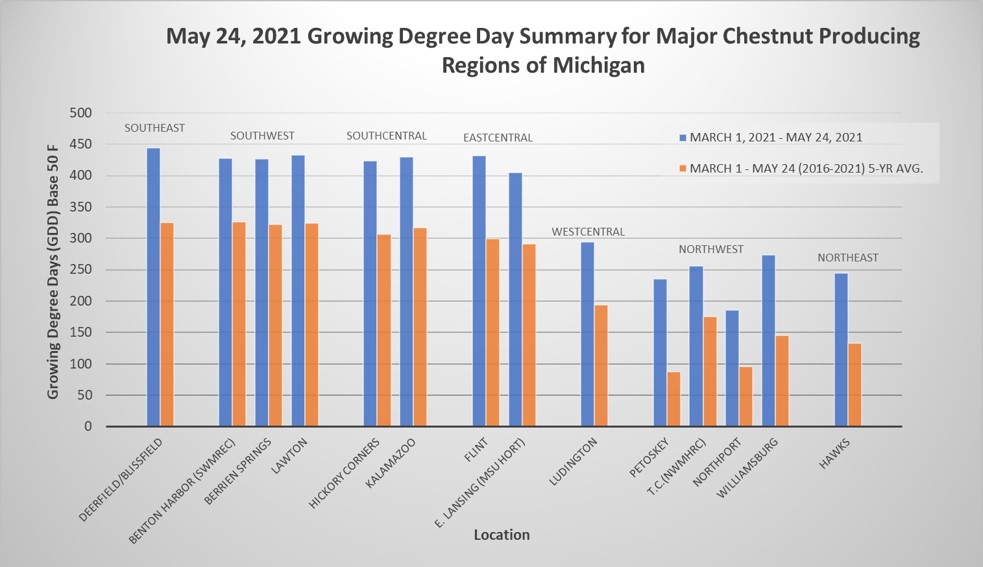
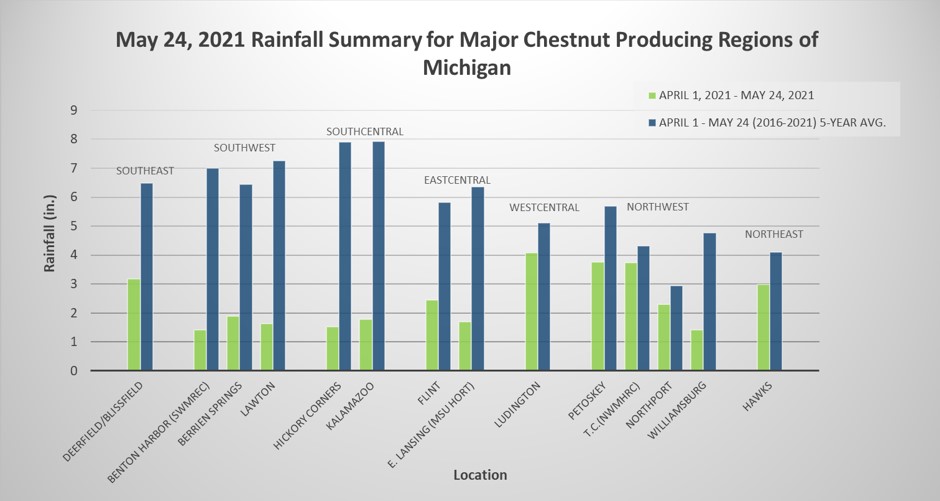
Looking ahead, there is a good probability that most areas across the state will receive some precipitation this week, though it won’t be sufficient to relieve the soil moisture deficit. Conditions will be fair, cool and dry for the holiday weekend.
Watch the most recent agricultural weather forecast from Michigan State University state climatologist Jeff Andresen.
Crop development
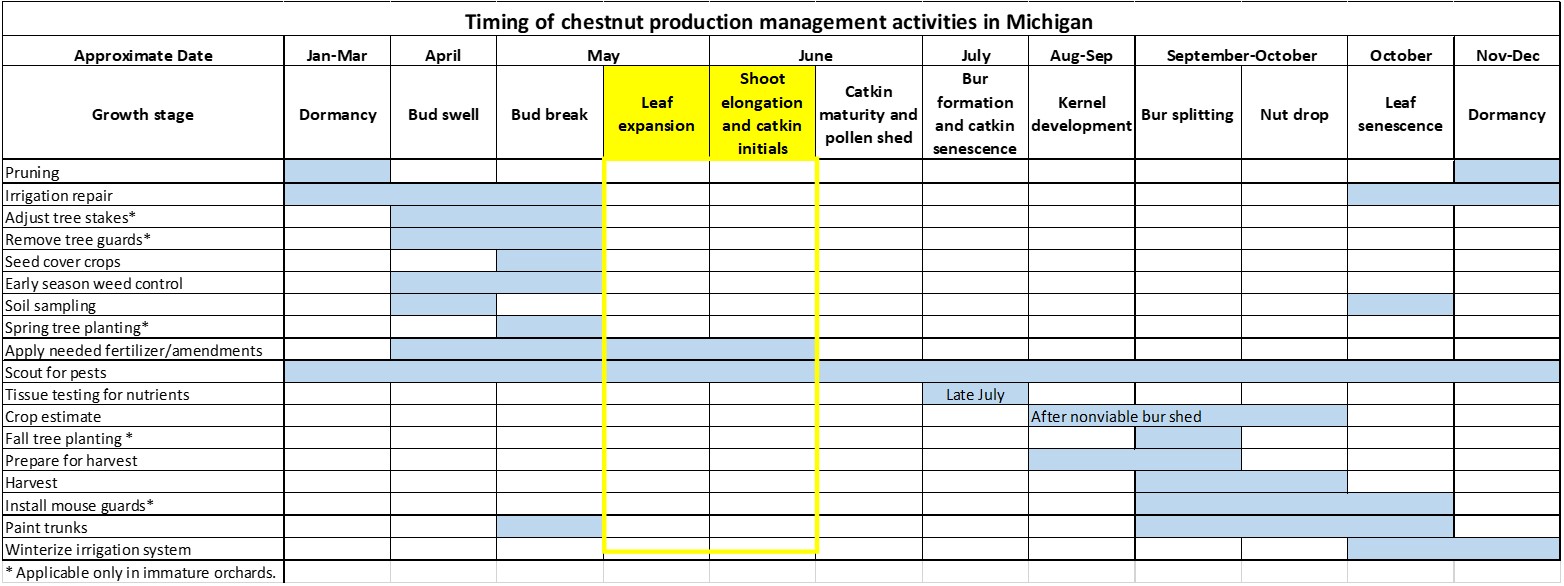
Tree development around the state is shifting from leaf expansion to shoot elongation with catkin initials present. Plant available soil moisture remains in deficit and water demand is ramping up as leaves and shoots expand. Even mature chestnut trees require supplemental water under these conditions to optimize production. Irrigate as appropriate based on soil moisture monitoring. Refer to these soil moisture monitoring methods for more information.
Northwest Michigan
Observed cultivars have really progressed over the past week with the first leaves fully expanded at this time and catkin initials present.
West central Michigan
Observed cultivars have really progressed over the past with the first leaves fully expanded at this time and catkin initials present.
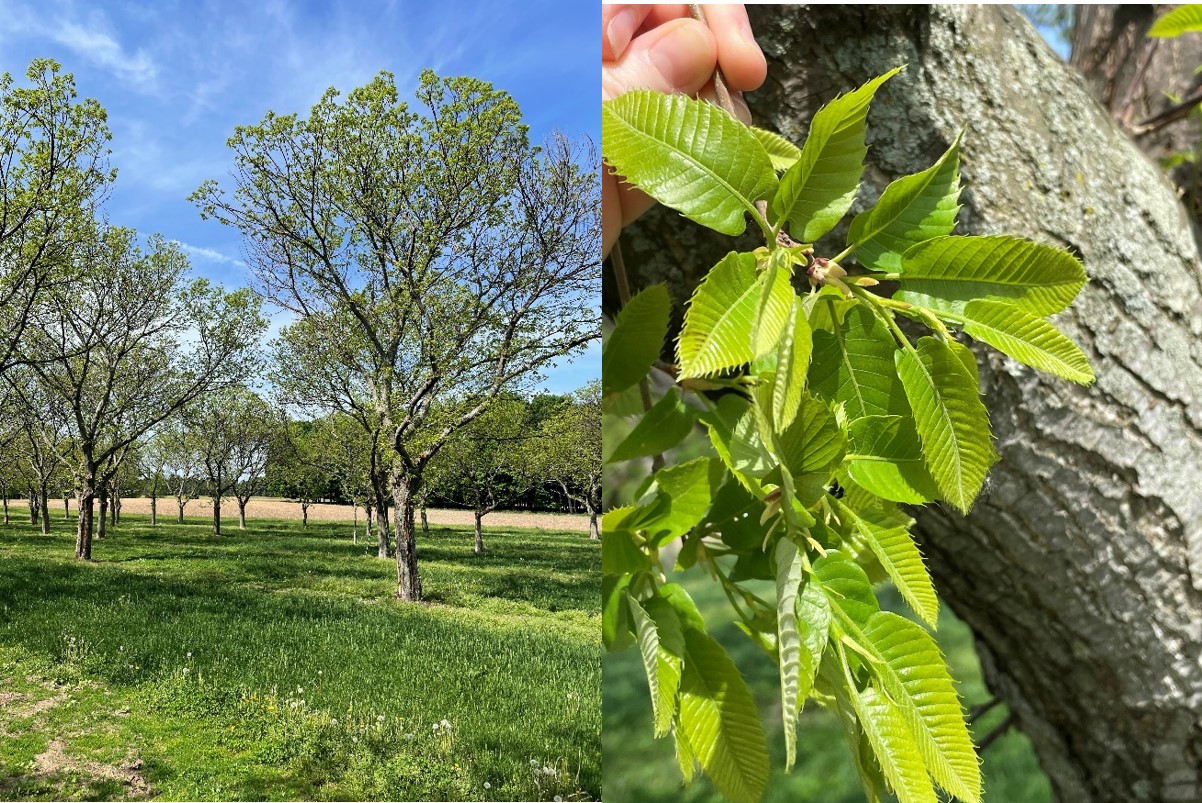
Fertility
Granular fertilizers should be applied in the spring and early summer. Splitting nutrient applications is recommended, with one application well before bud break and another during leaf expansion (at least two weeks apart, preferably four weeks). Trees that were pruned hard this past winter should receive less nitrogen to prevent excessive terminal growth.
As a reminder, for nutrient management considerations, please reference pages 5-7 of the 2021 Michigan Chestnut Management Guide or the Nutrient Management section of the MSU Extension Chestnuts website.
Integrated pest management
Insects
Potato leafhopper have been detected in southwest and west central Michigan. Like many plants, chestnuts are sensitive to the saliva of potato leafhopper, which is injected by the insect while feeding. Damage to leaf tissue can cause reduced photosynthesis which can impact production and quality and damage the tree. Most injury occurs on new tissue on shoot terminals with potato leafhopper feeding near the edges of the leaves using piercing-sucking mouthparts. Symptoms of feeding appear as whitish dots arranged in triangular shapes near the edges. Heavily damaged leaves are cupped with necrotic and chlorotic edges and eventually abscise from the tree. Severely infested shoots produce small, bunched leaves with reduced photosynthetic capacity.
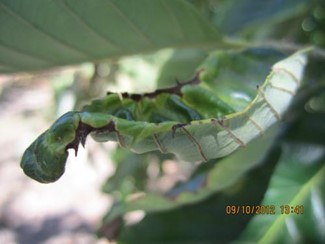
Adult leafhoppers are pale to bright green and about 1/8 inch long. Adults are easily noticeable, jumping, flying or running when agitated. The nymphs (immature leafhoppers) are pale green and have no wings but are very similar in form to the adults. Potato leafhopper move in all directions when disturbed, unlike some leafhoppers which have a distinct pattern of movement. The potato leafhopper can’t survive Michigan’s winter and survives in the Gulf States until adults migrate north in the spring on storm systems.

Scouting should be performed weekly as soon as leaf tissue is present to ensure detection early and prevent injury. More frequent spot checks should be done following rain storms which carry the first populations north. For every acre of orchard, select five trees to examine and inspect the leaves on three shoots per tree (a total of 15 shoots per acre). The easiest way to observe potato leafhopper is by flipping the shoots or leaves over and looking for adults and nymphs on the underside of leaves. Pay special attention to succulent new leaves on the terminals of branches. For more information on insecticides available for the treatment of potato leafhopper refer to the current Chestnut Management Guide.
Black stem borer, also known as ambrosia beetle, continues to emerge and can damage young orchards. Emergence typically begins in early April, peaks in late May and tapers off by the end of June. Refer to the MSU Extension article, “Black stem borer: An opportunistic pest of young fruit trees under stress,” for more information on biology, monitoring and management.
Gypsy moth larvae have also been observed feeding on chestnut leaves in southern Michigan. Growers with orchards adjacent to oak-dominated forests may see increased pressure and should keep an eye out for this pest. Insecticides containing Bacillus thuringiensis (i.e., Bt) will be effective, particularly when caterpillars are small. For more information on identifying gypsy moth and their lifecycle visit the MSU Gypsy Moth webpage.
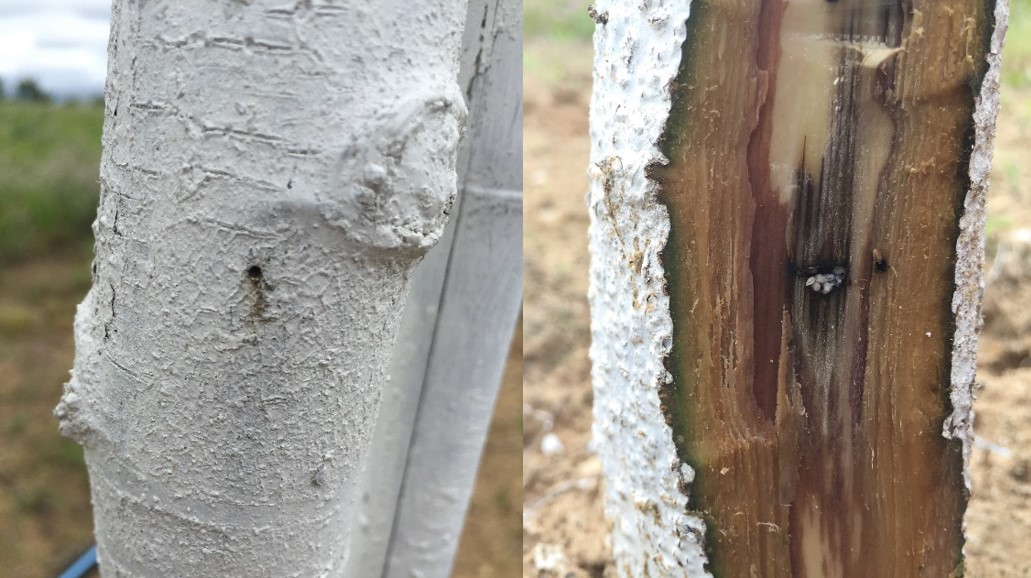
Diseases
Existing chestnut blight infections (caused by Cryphonectria parasitica) can be observed at this time. To learn more about chestnut blight, visit the Pest Management section of the MSU Extension Chestnut website.
Weeds
Spring conditions are ideal for controlling weeds under the tree canopy with herbicides. Herbicides are most effective when applied to small weeds.
Stay connected
For more information on chestnut production, visit MSU Extension Chestnuts and sign up to receive our newsletter. Also, join us for the 2021 Chestnut Chat Series every Wednesday at 12 p.m. from May 5 through Sept. 8, 2021. This series of interactive Zoom meetings will allow easy communication between producers and MSU faculty. These informal weekly sessions will include crop and pest updates from Rob Sirrine and Erin Lizotte. In addition, MSU faculty will drop in to address timely issues and provide research project updates. Bring your field notes too! We want to hear what’s going on in your orchard.
This material is based upon work supported by the National Institute of Food and Agriculture, U.S. Department of Agriculture, under Agreement No. 2017-70006-27175. Any opinions, findings, conclusions, or recommendations expressed in this publication are those of the author(s) and do not necessarily reflect the view of the U.S. Department of Agriculture.



 Print
Print Email
Email




